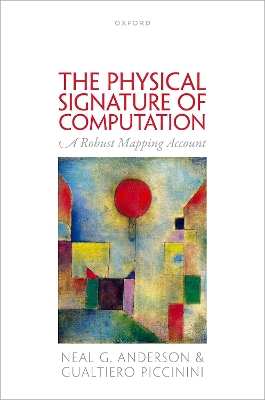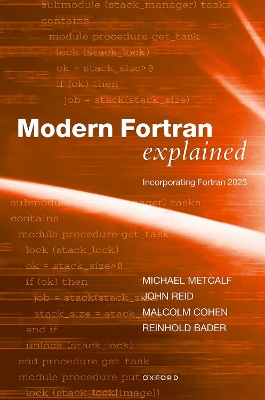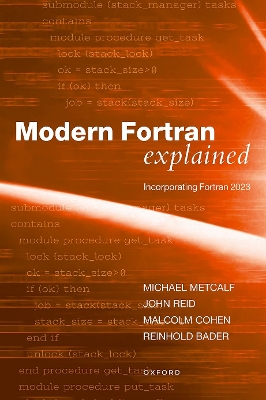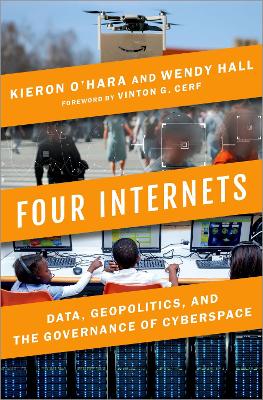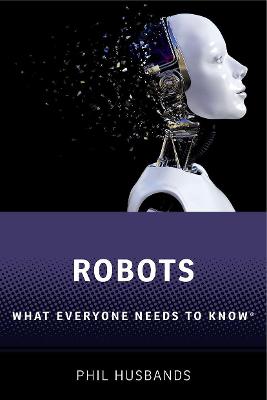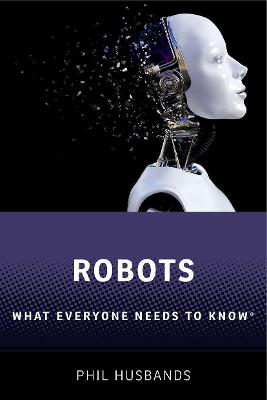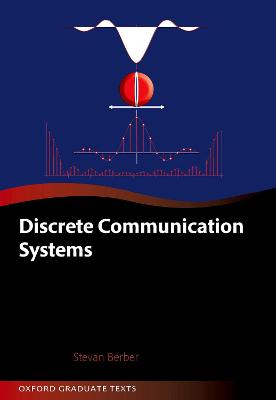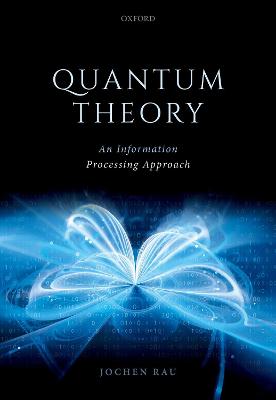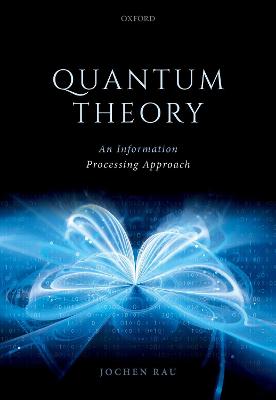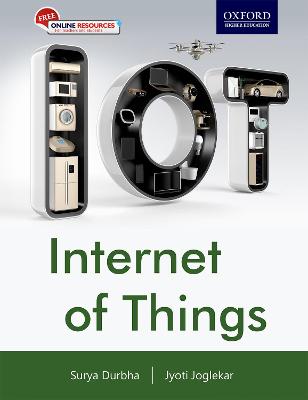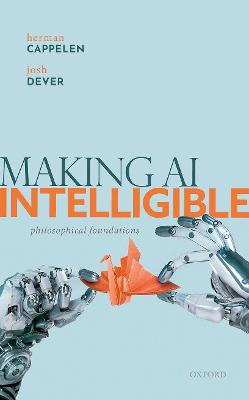Fundamentals of Computers
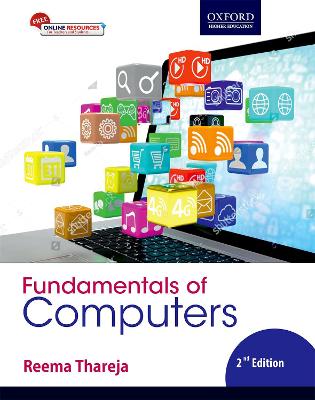 -10%
portes grátis
-10%
portes grátis
Fundamentals of Computers
Thareja, Reema
OUP India
02/2020
296
Mole
Inglês
9780199499274
15 a 20 dias
550
1.1 Computer
1.2 Characteristics of Computers
1.3 Stored Program Concept
1.3.1 Types of Stored Program Computers
1.4 History of Computers
Timeline of Developments
1.5 Classification of Computers
1.5.1 Supercomputers
1.5.2 Mainframe Computers
1.5.3 Minicomputers
1.5.4 Microcomputers
1.6 Applications of Computers
Bioinformatics, GIS, Remote Sensing, Meteorology, Publishing, Data analysis, Accounting, Airline and Railway reservation
1.7 Basic Organization of a Computer
Lab Activity: Understanding Computer Hardware
Activity 1: Parts of a Computer
Activity 2: Motherboard
Chap 2: Input and Output Devices
2.1 Input Devices
2.1.1 Keyboard
Wireless keyboard
2.1.2 Pointing Devices
2.1.3 Handheld Devices
2.1.4 Optical Devices
2.1.5 Audio-visual Input Devices
2.1.6 Card Readers
2.1.7 Digitizers
2.2 Output Devices
2.3 Soft Copy Devices
2.3.1 Monitors
LED monitor
2.3.2 Projectors
2.3.3 Speakers and Headphones
2.4 Hard Copy Devices
2.4.1 Printers
2.4.2 Plotters
2.5 Voice Response Systems
2.6 Biometric Devices
Lab Activity: Handling Input and Output Devices
Activity 1: Adding a Printer to a Computer
Activity 2: Customizing Mouse Properties in Windows 7
Chap 3: Computer Memory and Processors
3.1 Introduction
3.2 Memory Organization
3.3 Memory Hierarchy
3.4 Sequential and Random Access
3.5 Processor Registers
3.6 Cache Memory
3.7 Primary Memory
3.7.1 Random Access Memory (RAM)
3.7.2 Read Only Memory (ROM)
3.7.3 Finding Required Data from Main Memory
3.8 Secondary Storage Devices
3.8.1 Offline Storage
3.9 Magnetic Tapes
3.10 Floppy Disks
3.11 Hard Disks
3.12 External Hard Disks
3.13 Optical Disks
3.13.1 CD-ROM
3.13.2 DVD-ROM
3.13.3 CD-R
3.13.4 CD-RW
3.13.5 Blu-ray Disks
3.14 USB Flash Drives
3.15 Memory Cards
3.16 Mass Storage Devices
3.16.1 Disk Array
3.16.2 Automated Tape Library
3.16.3 CD-ROM Jukebox
3.17 Basic Processor Architecture
3.17.1 Execution Unit
3.17.2 Registers
3.17.3 Bus Interface Unit
3.17.4 Instruction Set
3.17.5 System Clock
3.17.6 Processor Speed
3.17.7 Processor to Memory Communication
3.17.8 Processor to I/O devices Communication
3.18 Pipelining and Parallel Processing
3.19 Types of Processors
3.19.1 Complex Instruction Set Computer
3.19.2 Reduced Instruction Set Computer
3.19.3 Multi-core Processors
Lab Activity: Handling Memory Storage Devices
Activity 1: Downloading files from a USB Flash Drive
Activity 2: Defragmenting a Local Drive
Chap 4: Number Systems and Computer Codes
4.1 Introduction to Number Systems
Representation of Numbers in Radix r
Positional and Non-positional Number Systems
4.2 Binary Number System
4.3 Working with Binary Numbers
4.3.1 Converting a Binary Number into Decimal
Form
4.3.2 Converting a Decimal Number into Binary
Form
4.3.3 Adding Two Binary Numbers
4.3.4 Subtracting Two Binary Numbers
4.3.5 Subtracting Two Binary Numbers Using
Two's Complement
4.3.6 Multiplying Two Binary Numbers
4.3.7 Dividing Two Binary Numbers
4.4 Octal Number System
4.4.1 Converting an Octal Number into Decimal
Form
4.4.2 Converting a Decimal Number into Octal Form
4.4.3 Converting an Octal Number into Binary Form
4.4.4 Converting a Binary Number into Octal Form
4.4.5 Adding Two Octal Numbers
4.4.6 Subtracting Two Octal Numbers
4.5 Hexadecimal Number System
4.5.1 Converting a Hexadecimal Number into
Decimal Form
4.5.2 Converting a Decimal Number into
Hexadecimal Form
4.5.3 Converting a Hexadecimal Number into
Binary Form
4.5.4 Converting a Binary Number into
Hexadecimal Form
4.5.5 Converting a Hexadecimal Number into
Octal Form
4.5.6 Converting an Octal Number into
Hexadecimal Form
4.5.7 Adding Two Hexadecimal Numbers
4.5.8 Subtracting Two Hexadecimal Numbers
4.6 Working with Fractions
4.7 Signed Number Representation in Binary Form
4.7.1 Sign-and-magnitude
4.7.2 One's Complement
4.7.3 Two's Complement
4.8 BCD Code
4.9 Other Codes
4.9.1 ASCII Code
4.9.2 Extended Binary Coded Decimal Interchange
Code
4.9.3 Excess-3 Code
4.9.4 Other Weighted Codes
8421 and 2421 Codes
4.9.5 Gray Code
4.9.6 Unicode
Chap 5: Boolean Algebra and Logic Circuits
5.1 Boolean Algebra
Precedence Rules of Boolean Operators
5.2 Truth Tables
5.3 Basic Laws of Boolean Algebra
Principle of Duality
5.3.1 Identity Law
5.3.2 Idempotency Law
5.3.3 Complement Law
5.3.4 Involution Law
5.3.5 Commutative Law
5.3.6 Associative Law
5.3.7 Distributive Law
5.3.8 Absorption Law
5.3.9 Consensus Law
5.3.10 De Morgan's Laws
5.4 Venn Diagrams
5.5 Representations of Boolean Functions
5.5.1 Minterm
5.5.2 Maxterm
5.6 Logic Gates
5.7 Logic Diagrams and Boolean Expressions
5.8 Universal Gates
5.8.1 NAND Universal Gate
5.8.2 NOR Universal Gate
5.9 Simplification of Boolean Expressions Using
Karnaugh Map
Cap 6: Computer Software
6.1 Introduction to Computer Software
6.2 Classification of Computer Software
6.3 System Software
6.3.1 Computer BIOS and Device Drivers
6.3.2 Operating System
6.3.3 Utility Software
6.3.4 Translators
6.4 Application Software
6.4.1 Productivity Software
6.4.2 Graphics Software
6.4.3 Multimedia Software
6.4.4 Database Management Software
6.5 Firmware
6.6 Middleware
6.7 Procuring Computer Software
Lab Activity
Chap 7: Problem Solving Using Computers
7.1 Introduction
7.2 Program Development Life Cycle [SDLC cycle]
7.3 Program Design Tools: Algorithms, Flowcharts, Pseudocodes
7.3.1 Algorithms
7.3.2 Flowcharts
7.3.3 Pseudocodes
7.4 Programming Languages
7.5 Generations of Programming Languages
7.5.1 First Generation: Machine Language
7.5.2 Second Generation: Assembly Language
7.5.3 Third Generation: High-level Language
7.5.4 Fourth Generation: Very High-level
Languages
7.5.5 Fifth-generation Programming Language
7.6 Categorization of High-level Languages
7.6.1 Unstructured Programming
7.6.2 Structured Programming Language
7.6.3 Logic-oriented Programming Language
7.6.4 Object-oriented Programming
7.7 Some Popular High-level Languages
7.7.1 BASIC
7.7.2 FORTRAN
7.7.3 Pascal
7.7.4 C
7.7.5 C++
7.7.6 Java
7.7.7 LISP
7.7.8 C#
7.7.9 Python
7.7.10 Mark-up
7.7.11 Scripting
7.7.12 Publishing
7.8 Factors Affecting Selection of Programming
Language
Lab Activity
Chap 8: Operating Systems
8.1 Introduction
8.2 Evolution of Operating Systems
8.3 Process Management
8.3.1 Process Control Block
8.3.2 Process Operations
8.3.3 Processes Scheduling
8.3.4 Process Synchronization
8.3.5 Interprocess Communication
8.3.6 Deadlock
8.4 Memory Management
8.4.1 Multiple Partition Allocation
8.4.2 Paging
8.4.3 Segmentation
8.5 File Management
8.5.1 Data Hierarchy
8.5.2 File Attributes
8.5.3 Basic File Operations
8.5.4 File Organization
File Systems (FAT, FAT32, NTFS)
8.6 Device Management
8.7 Security Management
8.8 Command Interpretation
8.9 Popular Operating Systems
8.9.1 Microsoft DOS
8.9.2 Microsoft Windows
8.9.3 Unix
8.9.4 Linux
8.9.5 Mac OS
8.10 Mobile Operating Systems
Lab Activity
Chap 9: Database Systems
9.1 File-Oriented Approach
9.2 Database-oriented Approach
9.2.1 Components of Database System
9.2.2 Advantages of Database Approach
9.2.3 Disadvantages of Database Approach
9.2.4 Applications of Database Systems
9.3 Database Views
9.4 Three-schema Architecture
9.5 Database Models
9.5.1 Hierarchical Model
9.5.2 Network Model
9.5.3 Relational Model
9.5.4 Object-oriented Data Model
9.6 Components of Database Management
Systems
9.7 Retrieving Data Through Queries
Chap 10: Computer Networks
10.1 Introduction to Computer Networks
10.1.1 Basics Elements of a Communication Process
10.1.2 Advantages of Computer
Networks
10.2 Types of Networks
10.2.1 Local Area Network
10.2.2 Wide Area Network
10.2.3 Metropolitan Area Network
10.2.4 Campus/Corporate Area Network
10.2.5 Personal Area Network
10.2.6 Peer-to-Peer Networks
10.3 Physical Components of a Network
10.4 Wired Media
10.4.1 Twisted-pair Wires
10.4.2 Coaxial Cables
10.4.3 Fibre Optic Cables
10.5 Wireless Media
10.5.1 Terrestrial Microwaves
10.5.2 Satellite Communication
10.5.3 Infrared Communication
10.6 Networking Devices
10.6.1 Hub
10.6.2 Repeater
10.6.3 Switch
10.6.4 Bridge
10.6.5 Router
10.6.6 Gateway
10.6.7 Network Interface Card
10.7 Network Topologies
10.7.1 Bus Topology
10.7.2 Star Topology
10.7.3 Ring Topology
10.7.4 Mesh topology
107.7.5 Hybrid Topology
10.8 Wireless Networks
10.9 Data Transmission Mode
10.9.1 Simplex, Half-duplex, and Full-duplex
Connections
10.9.2 Serial and Parallel Transmissions
10.9.3 Synchronous and Asynchronous Data
Transmission Modes
10.10 Data Switching
10.10.1 Circuit Switching
10.10.2 Message Switching
10.10.3 Packet Switching
10.11 Data Routing Techniques
10.12 Communication Protocols
10.12.1 Open System Interconnection
Model
10.12.2 Transmission Control Protocol/Internet
Protocol Model
Lab Activity
Chap 11: The Internet
11.1 Internet
11.1.1 History
11.1.2 Intranet and Extranet
11.1.3 Differences between Internet, Intranet, and Extranet
11.2 Internet Protocol Address
11.2.1 Types of IP Addresses
11.3. Domain Name System
11.4 Uniform Resource Locator
11.5 Internet browsers
11.6 Internet Services
11.6.1 Electronic Mail [from CCC - chap 6]
11.6.2 Social Networking
Advantages & Disadvantages of Social Networking for Business
11.6.3 Chatting
11.6.4 File Transfer Protocol
11.6.5 Internet Conferencing
11.6.6 Electronic Newspaper
11.6.7 World Wide Web
11.6.8 Online Shopping
11.6.9 Search Engine
11.7 Types of Internet Connections
11.7.1 Dial-up Connection
11.7.2 Integrated Services Digital Network
11.7.3 Leased Connection
11.7.4 Digital Subscriber Line Connection
11.7.5 Cable Modem Connection
11.7.6 Very Small Aperture Terminal
11.8 Internet Security
11.8.1 Threats to Internet Security
11.8.2 Preventive Measures
11.8.3 Anti-Virus Software
11.8.4 Firewalls
11.8.5 Concept of Encryption and Decryption
11.8.6 Digital Signature, Digital Certificate
11.9 Internet Glossary
Lab Activity
Activity 1: Configure Internet Explorer
Activity 2: Accessing Web Browser
Activity 2: Downloading and Saving Web pages
Activity 3: Adding Bookmarks / Favourites
Activity 4: Viewing History
Activity 5: Configuring Email Account on Gmail
Activity 6: Opening Email Account
Activity 7: Reading Emails
Activity 8: Creating and Sending a New Email
Activity 9: Replying to an Email Message
Activity 10: Sending Document by Email
Chap 12: Introduction to Windows 7
12.1 Desktop
12.2 Task Bar
12.3 Icons
12.4 Files and Folders
12.5 My Computer and Windows Explorer
12.6 My Documents
12.7 Recycle Bin
12.8 Internet Explorer
12.9 Control Panel
12.10 Start Menu
12.11 Windows Accessories: Notepad, Paintbrush
Lab Activities
Changing System Date and Time
Changing Display Settings
Changing Mouse Properties
Adding / Removing Windows Components
Setting Screen Saver and Appearance
Chap 13: Working with MS Word 2010
13.1 Objectives
13.2 Word Processing Basics
13.2.1 Opening Word Processing Package
13.2.2 Menu Bar
13.3 Opening, Printing, and Closing Documents
13.3.1 Opening Documents
13.3.2 Save and Save As
13.3.3 Page Setup
13.3.4 Print Preview, Printing and Closing Documents
13.3.5 Document Views
13.4 Text Creation and Manipulation
13.4.1 Document Creation
13.4.2 Text Editing
13.4.3 Text Selection
13.4.4 Cut, Copy, and Paste
134.4.5 Font and Size Selection
13.4.6 Alignment of Text
13.4.7 Changing Font Colours
13.4.8 Highlighting Text with Colours
13.4.9 Applying Text Effects
13.4.10 Inserting WordArt
13.4.11 Find and Replace
13.5 Formatting the Text
13.5.1 Paragraph Indenting
13.5.2 Line and Paragraph Spacing
13.5.3 Bullets and Numbering
13.5.4 Case Changing
13.5.6 Format Painter
13.6 Spelling and Grammar
Auto Correct
Auto Complete
Setting Language
13.7 Inserting Pictures
13.8 Inserting Shapes
13.9 Inserting Text Box
13.10 Table Manipulation
13.10.1 Drawing Table
13.10.2 Changing Cell Width and Height
13.10.3 Alignment of Text in Cell
13.10.4 Deleting/Inserting a Row/Column in a Table
13.10.5 Borders and Shading
13.10.6 Merging Cells
13.10.7 Splitting Cells
13.10.8 Adjusting Cell Size by Dragging
13.10.9 Cell Margins
13.10.10 Changing the Direction of Text in Table
13.11 Mail Merge
13.11.1 Creating Envelopes and Labels
13.11 Headers and Footers
13.12 Hyperlinks
13.13 Recording Macros
13.14 Equation Editor
Shortcut Keys
Chapter 14: Working with MS Excel 2010
Introduction
14.1 Objectives
14.2 Elements of Electronic Spreadsheet
14.2.1 Opening a Spreadsheet
14.2.2 Addressing Cells
14.2.3 Printing Spreadsheets
14.2.4 Saving Workbooks
14.3 Manipulation of Cells
14.3.1 Entering Text, Numbers, and Dates
14.3.2 Creating Text, Number, Date, Time, Weekdays, Months, or Years Series
14.3.3 Editing Worksheet Data
14.3.4 Inserting New Worksheet 82
14.3.5 Inserting or Deleting Cells, Rows, and Columns
14.3.6 Changing Column Width and Row Height
14.3.7 Formatting Rows, Columns, and Sheets
14.3.8 Protecting and Un-protecting Cells, Rows, Columns, and Sheets with or without Password
14.3.9 Hiding/Unhiding Rows, Columns, and Sheets
14.3.10 Autofill
14.4 Functions and Charts
14.4.1 Formulas
14.4.2 Functions
14.4.3 Charts
14.5 Conditional Formatting
14.5.1 Applying Several Conditional Formatting Rules to One Cell/Table
14.5.2 Editing Conditional Formatting Rules
14.5.3 Deleting Conditional Formatting Rules
14.5.4 Using Icon Sets
14.5.5 Conditional Formatting Using Data Bars
14.5.6 Conditional Formatting Using Colour Scales
14.6 Sorting Data A-Z and Z-A
14.7 Filtering Data
14.8 Advanced Filter
14.9 Pivot Tables
14.10 Pivot Charts
14.11 VBA Macro
14.12 Add-ins in Excel
Chapter 15: Working with MS PowerPoint 2010
Introduction
15.1 Objectives
15.2 Basics
15.2.1 Using PowerPoint
15.2.2 Opening a PowerPoint Presentation
15.2.3 Saving a Presentation
15.3 Creation of Presentation
15.3.1 Creating a Presentation Using a Template
15.3.2 Creating a Blank Presentation
15.3.3 Entering and Editing Text
15.3.4 Inserting and Deleting Slides in a Presentation
15.4 Preparation of Slides
15.4.1 Inserting Word Table or an Excel Worksheet
15.4.2 Adding Clip Art Pictures
15.4.3 Inserting Other Objects
15.4.4 Resizing and Scaling an Object
15.5 Providing Aesthetics
15.5.1 Enhancing Text Presentation
15.5.2 Working with Color and Line Style
15.5.3 Adding Movie and Sound
15.5.4 Adding Headers or Footers
15.6 Presentation of Slides
15.6.1 Viewing a Presentation
15.6.2 Choosing a Set-up for Presentation
15.6.3 Printing Slides and Handouts
15.6.7 Hiding Slides
15.7 Slide Show
15.7.1 Running a Slide Show
15.7.2 Setting the Timing and Speed of a Transition
15.7.3 Automating a Slide Show
15.8 Using Preset Animations
Glossary of Emerging Trends in Information Technology
1.1 Computer
1.2 Characteristics of Computers
1.3 Stored Program Concept
1.3.1 Types of Stored Program Computers
1.4 History of Computers
Timeline of Developments
1.5 Classification of Computers
1.5.1 Supercomputers
1.5.2 Mainframe Computers
1.5.3 Minicomputers
1.5.4 Microcomputers
1.6 Applications of Computers
Bioinformatics, GIS, Remote Sensing, Meteorology, Publishing, Data analysis, Accounting, Airline and Railway reservation
1.7 Basic Organization of a Computer
Lab Activity: Understanding Computer Hardware
Activity 1: Parts of a Computer
Activity 2: Motherboard
Chap 2: Input and Output Devices
2.1 Input Devices
2.1.1 Keyboard
Wireless keyboard
2.1.2 Pointing Devices
2.1.3 Handheld Devices
2.1.4 Optical Devices
2.1.5 Audio-visual Input Devices
2.1.6 Card Readers
2.1.7 Digitizers
2.2 Output Devices
2.3 Soft Copy Devices
2.3.1 Monitors
LED monitor
2.3.2 Projectors
2.3.3 Speakers and Headphones
2.4 Hard Copy Devices
2.4.1 Printers
2.4.2 Plotters
2.5 Voice Response Systems
2.6 Biometric Devices
Lab Activity: Handling Input and Output Devices
Activity 1: Adding a Printer to a Computer
Activity 2: Customizing Mouse Properties in Windows 7
Chap 3: Computer Memory and Processors
3.1 Introduction
3.2 Memory Organization
3.3 Memory Hierarchy
3.4 Sequential and Random Access
3.5 Processor Registers
3.6 Cache Memory
3.7 Primary Memory
3.7.1 Random Access Memory (RAM)
3.7.2 Read Only Memory (ROM)
3.7.3 Finding Required Data from Main Memory
3.8 Secondary Storage Devices
3.8.1 Offline Storage
3.9 Magnetic Tapes
3.10 Floppy Disks
3.11 Hard Disks
3.12 External Hard Disks
3.13 Optical Disks
3.13.1 CD-ROM
3.13.2 DVD-ROM
3.13.3 CD-R
3.13.4 CD-RW
3.13.5 Blu-ray Disks
3.14 USB Flash Drives
3.15 Memory Cards
3.16 Mass Storage Devices
3.16.1 Disk Array
3.16.2 Automated Tape Library
3.16.3 CD-ROM Jukebox
3.17 Basic Processor Architecture
3.17.1 Execution Unit
3.17.2 Registers
3.17.3 Bus Interface Unit
3.17.4 Instruction Set
3.17.5 System Clock
3.17.6 Processor Speed
3.17.7 Processor to Memory Communication
3.17.8 Processor to I/O devices Communication
3.18 Pipelining and Parallel Processing
3.19 Types of Processors
3.19.1 Complex Instruction Set Computer
3.19.2 Reduced Instruction Set Computer
3.19.3 Multi-core Processors
Lab Activity: Handling Memory Storage Devices
Activity 1: Downloading files from a USB Flash Drive
Activity 2: Defragmenting a Local Drive
Chap 4: Number Systems and Computer Codes
4.1 Introduction to Number Systems
Representation of Numbers in Radix r
Positional and Non-positional Number Systems
4.2 Binary Number System
4.3 Working with Binary Numbers
4.3.1 Converting a Binary Number into Decimal
Form
4.3.2 Converting a Decimal Number into Binary
Form
4.3.3 Adding Two Binary Numbers
4.3.4 Subtracting Two Binary Numbers
4.3.5 Subtracting Two Binary Numbers Using
Two's Complement
4.3.6 Multiplying Two Binary Numbers
4.3.7 Dividing Two Binary Numbers
4.4 Octal Number System
4.4.1 Converting an Octal Number into Decimal
Form
4.4.2 Converting a Decimal Number into Octal Form
4.4.3 Converting an Octal Number into Binary Form
4.4.4 Converting a Binary Number into Octal Form
4.4.5 Adding Two Octal Numbers
4.4.6 Subtracting Two Octal Numbers
4.5 Hexadecimal Number System
4.5.1 Converting a Hexadecimal Number into
Decimal Form
4.5.2 Converting a Decimal Number into
Hexadecimal Form
4.5.3 Converting a Hexadecimal Number into
Binary Form
4.5.4 Converting a Binary Number into
Hexadecimal Form
4.5.5 Converting a Hexadecimal Number into
Octal Form
4.5.6 Converting an Octal Number into
Hexadecimal Form
4.5.7 Adding Two Hexadecimal Numbers
4.5.8 Subtracting Two Hexadecimal Numbers
4.6 Working with Fractions
4.7 Signed Number Representation in Binary Form
4.7.1 Sign-and-magnitude
4.7.2 One's Complement
4.7.3 Two's Complement
4.8 BCD Code
4.9 Other Codes
4.9.1 ASCII Code
4.9.2 Extended Binary Coded Decimal Interchange
Code
4.9.3 Excess-3 Code
4.9.4 Other Weighted Codes
8421 and 2421 Codes
4.9.5 Gray Code
4.9.6 Unicode
Chap 5: Boolean Algebra and Logic Circuits
5.1 Boolean Algebra
Precedence Rules of Boolean Operators
5.2 Truth Tables
5.3 Basic Laws of Boolean Algebra
Principle of Duality
5.3.1 Identity Law
5.3.2 Idempotency Law
5.3.3 Complement Law
5.3.4 Involution Law
5.3.5 Commutative Law
5.3.6 Associative Law
5.3.7 Distributive Law
5.3.8 Absorption Law
5.3.9 Consensus Law
5.3.10 De Morgan's Laws
5.4 Venn Diagrams
5.5 Representations of Boolean Functions
5.5.1 Minterm
5.5.2 Maxterm
5.6 Logic Gates
5.7 Logic Diagrams and Boolean Expressions
5.8 Universal Gates
5.8.1 NAND Universal Gate
5.8.2 NOR Universal Gate
5.9 Simplification of Boolean Expressions Using
Karnaugh Map
Cap 6: Computer Software
6.1 Introduction to Computer Software
6.2 Classification of Computer Software
6.3 System Software
6.3.1 Computer BIOS and Device Drivers
6.3.2 Operating System
6.3.3 Utility Software
6.3.4 Translators
6.4 Application Software
6.4.1 Productivity Software
6.4.2 Graphics Software
6.4.3 Multimedia Software
6.4.4 Database Management Software
6.5 Firmware
6.6 Middleware
6.7 Procuring Computer Software
Lab Activity
Chap 7: Problem Solving Using Computers
7.1 Introduction
7.2 Program Development Life Cycle [SDLC cycle]
7.3 Program Design Tools: Algorithms, Flowcharts, Pseudocodes
7.3.1 Algorithms
7.3.2 Flowcharts
7.3.3 Pseudocodes
7.4 Programming Languages
7.5 Generations of Programming Languages
7.5.1 First Generation: Machine Language
7.5.2 Second Generation: Assembly Language
7.5.3 Third Generation: High-level Language
7.5.4 Fourth Generation: Very High-level
Languages
7.5.5 Fifth-generation Programming Language
7.6 Categorization of High-level Languages
7.6.1 Unstructured Programming
7.6.2 Structured Programming Language
7.6.3 Logic-oriented Programming Language
7.6.4 Object-oriented Programming
7.7 Some Popular High-level Languages
7.7.1 BASIC
7.7.2 FORTRAN
7.7.3 Pascal
7.7.4 C
7.7.5 C++
7.7.6 Java
7.7.7 LISP
7.7.8 C#
7.7.9 Python
7.7.10 Mark-up
7.7.11 Scripting
7.7.12 Publishing
7.8 Factors Affecting Selection of Programming
Language
Lab Activity
Chap 8: Operating Systems
8.1 Introduction
8.2 Evolution of Operating Systems
8.3 Process Management
8.3.1 Process Control Block
8.3.2 Process Operations
8.3.3 Processes Scheduling
8.3.4 Process Synchronization
8.3.5 Interprocess Communication
8.3.6 Deadlock
8.4 Memory Management
8.4.1 Multiple Partition Allocation
8.4.2 Paging
8.4.3 Segmentation
8.5 File Management
8.5.1 Data Hierarchy
8.5.2 File Attributes
8.5.3 Basic File Operations
8.5.4 File Organization
File Systems (FAT, FAT32, NTFS)
8.6 Device Management
8.7 Security Management
8.8 Command Interpretation
8.9 Popular Operating Systems
8.9.1 Microsoft DOS
8.9.2 Microsoft Windows
8.9.3 Unix
8.9.4 Linux
8.9.5 Mac OS
8.10 Mobile Operating Systems
Lab Activity
Chap 9: Database Systems
9.1 File-Oriented Approach
9.2 Database-oriented Approach
9.2.1 Components of Database System
9.2.2 Advantages of Database Approach
9.2.3 Disadvantages of Database Approach
9.2.4 Applications of Database Systems
9.3 Database Views
9.4 Three-schema Architecture
9.5 Database Models
9.5.1 Hierarchical Model
9.5.2 Network Model
9.5.3 Relational Model
9.5.4 Object-oriented Data Model
9.6 Components of Database Management
Systems
9.7 Retrieving Data Through Queries
Chap 10: Computer Networks
10.1 Introduction to Computer Networks
10.1.1 Basics Elements of a Communication Process
10.1.2 Advantages of Computer
Networks
10.2 Types of Networks
10.2.1 Local Area Network
10.2.2 Wide Area Network
10.2.3 Metropolitan Area Network
10.2.4 Campus/Corporate Area Network
10.2.5 Personal Area Network
10.2.6 Peer-to-Peer Networks
10.3 Physical Components of a Network
10.4 Wired Media
10.4.1 Twisted-pair Wires
10.4.2 Coaxial Cables
10.4.3 Fibre Optic Cables
10.5 Wireless Media
10.5.1 Terrestrial Microwaves
10.5.2 Satellite Communication
10.5.3 Infrared Communication
10.6 Networking Devices
10.6.1 Hub
10.6.2 Repeater
10.6.3 Switch
10.6.4 Bridge
10.6.5 Router
10.6.6 Gateway
10.6.7 Network Interface Card
10.7 Network Topologies
10.7.1 Bus Topology
10.7.2 Star Topology
10.7.3 Ring Topology
10.7.4 Mesh topology
107.7.5 Hybrid Topology
10.8 Wireless Networks
10.9 Data Transmission Mode
10.9.1 Simplex, Half-duplex, and Full-duplex
Connections
10.9.2 Serial and Parallel Transmissions
10.9.3 Synchronous and Asynchronous Data
Transmission Modes
10.10 Data Switching
10.10.1 Circuit Switching
10.10.2 Message Switching
10.10.3 Packet Switching
10.11 Data Routing Techniques
10.12 Communication Protocols
10.12.1 Open System Interconnection
Model
10.12.2 Transmission Control Protocol/Internet
Protocol Model
Lab Activity
Chap 11: The Internet
11.1 Internet
11.1.1 History
11.1.2 Intranet and Extranet
11.1.3 Differences between Internet, Intranet, and Extranet
11.2 Internet Protocol Address
11.2.1 Types of IP Addresses
11.3. Domain Name System
11.4 Uniform Resource Locator
11.5 Internet browsers
11.6 Internet Services
11.6.1 Electronic Mail [from CCC - chap 6]
11.6.2 Social Networking
Advantages & Disadvantages of Social Networking for Business
11.6.3 Chatting
11.6.4 File Transfer Protocol
11.6.5 Internet Conferencing
11.6.6 Electronic Newspaper
11.6.7 World Wide Web
11.6.8 Online Shopping
11.6.9 Search Engine
11.7 Types of Internet Connections
11.7.1 Dial-up Connection
11.7.2 Integrated Services Digital Network
11.7.3 Leased Connection
11.7.4 Digital Subscriber Line Connection
11.7.5 Cable Modem Connection
11.7.6 Very Small Aperture Terminal
11.8 Internet Security
11.8.1 Threats to Internet Security
11.8.2 Preventive Measures
11.8.3 Anti-Virus Software
11.8.4 Firewalls
11.8.5 Concept of Encryption and Decryption
11.8.6 Digital Signature, Digital Certificate
11.9 Internet Glossary
Lab Activity
Activity 1: Configure Internet Explorer
Activity 2: Accessing Web Browser
Activity 2: Downloading and Saving Web pages
Activity 3: Adding Bookmarks / Favourites
Activity 4: Viewing History
Activity 5: Configuring Email Account on Gmail
Activity 6: Opening Email Account
Activity 7: Reading Emails
Activity 8: Creating and Sending a New Email
Activity 9: Replying to an Email Message
Activity 10: Sending Document by Email
Chap 12: Introduction to Windows 7
12.1 Desktop
12.2 Task Bar
12.3 Icons
12.4 Files and Folders
12.5 My Computer and Windows Explorer
12.6 My Documents
12.7 Recycle Bin
12.8 Internet Explorer
12.9 Control Panel
12.10 Start Menu
12.11 Windows Accessories: Notepad, Paintbrush
Lab Activities
Changing System Date and Time
Changing Display Settings
Changing Mouse Properties
Adding / Removing Windows Components
Setting Screen Saver and Appearance
Chap 13: Working with MS Word 2010
13.1 Objectives
13.2 Word Processing Basics
13.2.1 Opening Word Processing Package
13.2.2 Menu Bar
13.3 Opening, Printing, and Closing Documents
13.3.1 Opening Documents
13.3.2 Save and Save As
13.3.3 Page Setup
13.3.4 Print Preview, Printing and Closing Documents
13.3.5 Document Views
13.4 Text Creation and Manipulation
13.4.1 Document Creation
13.4.2 Text Editing
13.4.3 Text Selection
13.4.4 Cut, Copy, and Paste
134.4.5 Font and Size Selection
13.4.6 Alignment of Text
13.4.7 Changing Font Colours
13.4.8 Highlighting Text with Colours
13.4.9 Applying Text Effects
13.4.10 Inserting WordArt
13.4.11 Find and Replace
13.5 Formatting the Text
13.5.1 Paragraph Indenting
13.5.2 Line and Paragraph Spacing
13.5.3 Bullets and Numbering
13.5.4 Case Changing
13.5.6 Format Painter
13.6 Spelling and Grammar
Auto Correct
Auto Complete
Setting Language
13.7 Inserting Pictures
13.8 Inserting Shapes
13.9 Inserting Text Box
13.10 Table Manipulation
13.10.1 Drawing Table
13.10.2 Changing Cell Width and Height
13.10.3 Alignment of Text in Cell
13.10.4 Deleting/Inserting a Row/Column in a Table
13.10.5 Borders and Shading
13.10.6 Merging Cells
13.10.7 Splitting Cells
13.10.8 Adjusting Cell Size by Dragging
13.10.9 Cell Margins
13.10.10 Changing the Direction of Text in Table
13.11 Mail Merge
13.11.1 Creating Envelopes and Labels
13.11 Headers and Footers
13.12 Hyperlinks
13.13 Recording Macros
13.14 Equation Editor
Shortcut Keys
Chapter 14: Working with MS Excel 2010
Introduction
14.1 Objectives
14.2 Elements of Electronic Spreadsheet
14.2.1 Opening a Spreadsheet
14.2.2 Addressing Cells
14.2.3 Printing Spreadsheets
14.2.4 Saving Workbooks
14.3 Manipulation of Cells
14.3.1 Entering Text, Numbers, and Dates
14.3.2 Creating Text, Number, Date, Time, Weekdays, Months, or Years Series
14.3.3 Editing Worksheet Data
14.3.4 Inserting New Worksheet 82
14.3.5 Inserting or Deleting Cells, Rows, and Columns
14.3.6 Changing Column Width and Row Height
14.3.7 Formatting Rows, Columns, and Sheets
14.3.8 Protecting and Un-protecting Cells, Rows, Columns, and Sheets with or without Password
14.3.9 Hiding/Unhiding Rows, Columns, and Sheets
14.3.10 Autofill
14.4 Functions and Charts
14.4.1 Formulas
14.4.2 Functions
14.4.3 Charts
14.5 Conditional Formatting
14.5.1 Applying Several Conditional Formatting Rules to One Cell/Table
14.5.2 Editing Conditional Formatting Rules
14.5.3 Deleting Conditional Formatting Rules
14.5.4 Using Icon Sets
14.5.5 Conditional Formatting Using Data Bars
14.5.6 Conditional Formatting Using Colour Scales
14.6 Sorting Data A-Z and Z-A
14.7 Filtering Data
14.8 Advanced Filter
14.9 Pivot Tables
14.10 Pivot Charts
14.11 VBA Macro
14.12 Add-ins in Excel
Chapter 15: Working with MS PowerPoint 2010
Introduction
15.1 Objectives
15.2 Basics
15.2.1 Using PowerPoint
15.2.2 Opening a PowerPoint Presentation
15.2.3 Saving a Presentation
15.3 Creation of Presentation
15.3.1 Creating a Presentation Using a Template
15.3.2 Creating a Blank Presentation
15.3.3 Entering and Editing Text
15.3.4 Inserting and Deleting Slides in a Presentation
15.4 Preparation of Slides
15.4.1 Inserting Word Table or an Excel Worksheet
15.4.2 Adding Clip Art Pictures
15.4.3 Inserting Other Objects
15.4.4 Resizing and Scaling an Object
15.5 Providing Aesthetics
15.5.1 Enhancing Text Presentation
15.5.2 Working with Color and Line Style
15.5.3 Adding Movie and Sound
15.5.4 Adding Headers or Footers
15.6 Presentation of Slides
15.6.1 Viewing a Presentation
15.6.2 Choosing a Set-up for Presentation
15.6.3 Printing Slides and Handouts
15.6.7 Hiding Slides
15.7 Slide Show
15.7.1 Running a Slide Show
15.7.2 Setting the Timing and Speed of a Transition
15.7.3 Automating a Slide Show
15.8 Using Preset Animations
Glossary of Emerging Trends in Information Technology

